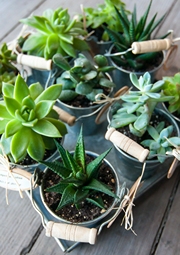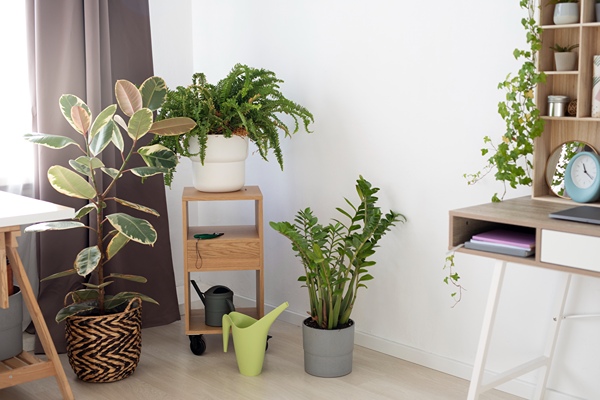How Plants Can Enhance Home Learning Spaces
Plants play a vital role in home learning spaces and can help enhance the educational experience by promoting focus, concentration, and much more. So, what is the best way to create this calming atmosphere? Here are five prime benefits of placing plants in kids’ study spaces.
You will also learn practical steps to help you and your kids acquire and maintain your plants. The benefits of plants in home learning spaces include:
Improved Concentration and Focus
Fresh air has many benefits, including enhanced focus and concentration, an idea supported by a study showing how spending time in a green environment helps create a calming and relaxed mind.
From this, we can conclude that adding plants to home study spaces creates an ideal learning experience by reducing or removing stress and anxiety.
Furthermore, plants help improve cognitive functions, relieve physical tiredness, and promote focus for longer periods.
Air Purification
Air purification is one of the most foundational benefits of having plants in a home learning space.
As you know, the human body breathes in oxygen and releases carbon dioxide; plants, on the other hand, absorb and process CO2 into fresh, clean air. This symbiotic relationship improves air quality. Breathing clean air reduces the chances of respiratory issues or allergies and creates a healthier learning environment for kids.
Certain plants, including aloe vera, weeping fig, peace lilies, friendship plants, and others that you can order online from providers like BloomsyBox, are great air purifiers, easy to care for, and ideal for dedicated learning spaces.
Aesthetic and Psychological Benefits
Adding plants to a home learning space can make it more visually appealing and inviting to kids. Placing decorative plants in kids’ study spaces also improves their mood and motivation and can encourage them to spend more time in their study area.
Indoor plants also help children feel more connected to nature, which can be very beneficial because they will want to spend more time around their inviting learning space. This kind of connection creates a sense of satisfaction.
Educational Opportunities
Caring for plants can be an educational experience that gets kids into gardening. It can teach them about plants, how they grow, how they help the environment, and even how to care for them. Learning this helps complement their academic studies in STEM subjects like science and biology.
Adding plants to home learning spaces can also help kids acquire practical life skills they can use as they grow up. For example, plant-related activities like measuring plant growth, photosynthesis, or drawing plants can enhance their education and motor skills.
Teaching Responsibility and Care
Caring for plants in the home learning space can also teach children responsibility and care.
For example, since plants need regular watering, ideal light conditions, and good air circulation, teaching children how to do all this will instill a sense of responsibility and teach them valuable life skills.
Practical Ways to Incorporate Plants Into Home Learning Spaces
Now that you know the benefits of having plants in home learning spaces, let’s focus on a few key steps you can take to get started:
Step 1: Choose the Right Plants
For starters, do your best to choose the right indoor plants for your space based on your goals. Before buying plants, consider the maintenance options and check if they are safe for the children’s environment.
Select easy-to-care-for plants that thrive indoors. Pothos and succulents are good examples because they require minimal watering and can tolerate low light levels.
Step 2: Go for non-toxic plants
Choose plants that are safe for children and pets, aka non-toxic plants. Spider plants and Boston ferns are ideal examples, but since you have unlimited options, feel free to go for safe plants that meet your goals and needs.
Step 3: Strategically place the plants
Plant placement and care are also crucial. Place the plants where they can receive enough sunlight and air, which is important for their growth. Some ideal places to put your plants are window sills, desks, shelves, and other easily accessible and reachable areas so your kids can care for the plants.
Step 4: Create a maintenance plan
Involve your kids to create a maintenance plan detailing how often you’ll water and care for your preferred plants, including who’s responsible for what and when. Train them to do it daily or weekly to foster a sense of responsibility and ownership.
Step 5: Shop for the plants together
Online shopping is the easiest way to get plants. However, you could also get plants from local nurseries and garden centers. Either way, involve your kids in the shopping experience to ensure they choose plants they want in their learning spaces.
Conclusion
In conclusion, incorporating plants into home learning spaces creates a clean environment for studying by purifying the air. It also provides educational opportunities and enhances the overall aesthetic of the environment.






